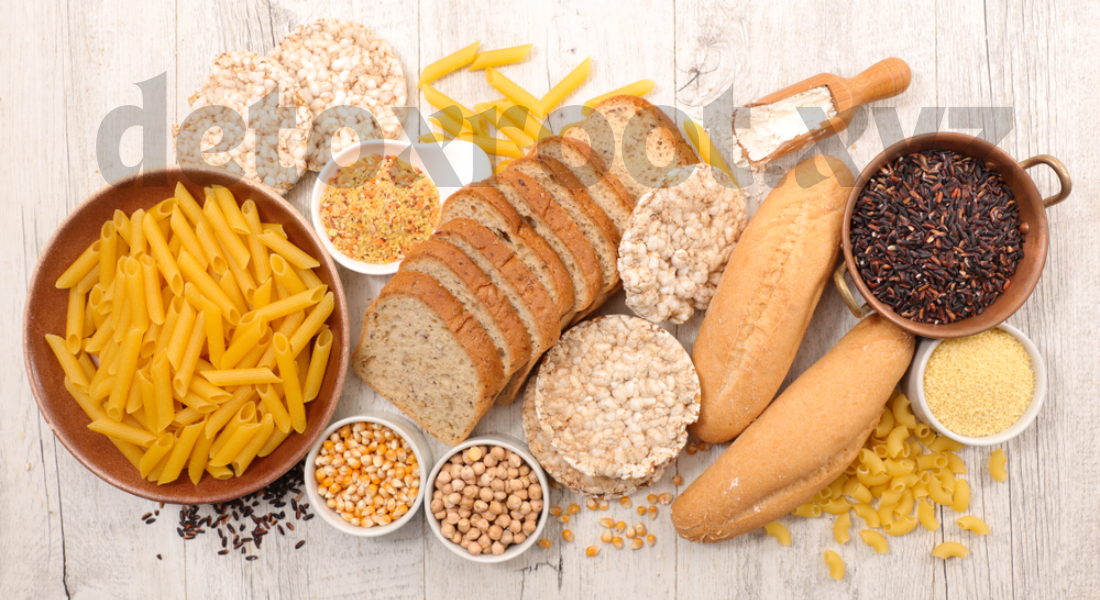What Is a Gluten-Free Diet?
In recent years, gluten-free diets have become increasingly popular, but what exactly does this term mean? A gluten-free diet eliminates gluten, a protein found in wheat, barley, rye, and their derivatives. Gluten is commonly found in a wide range of foods, including bread, pasta, cereals, baked goods, and processed foods. For some individuals, consuming gluten can lead to serious health issues, making it necessary to avoid it entirely. This diet is primarily recommended for individuals who suffer from celiac disease, a gluten intolerance, or gluten sensitivity. However, many people choose to adopt a gluten-free lifestyle for various reasons, including improved digestion, better energy levels, and even skin health.
A gluten-free diet can help individuals with digestive issues such as bloating, gas, and abdominal discomfort. It has also been linked to reducing inflammation, which can improve overall well-being. For those suffering from conditions like eczema, psoriasis, or acne, a gluten-free diet has been reported to help alleviate skin flare-ups and promote clearer skin. If you’re considering a gluten-free diet, this guide will walk you through everything you need to know, offering insights into its potential health benefits and tips on how to implement it successfully.
The rise in popularity of gluten-free living can also be attributed to people seeking natural, holistic ways to address digestive concerns, skin conditions, chronic fatigue, and even mental clarity. Many individuals have discovered that by removing gluten from their diets, they experience fewer symptoms of discomfort and overall improvements in their quality of life. While gluten-free diets are essential for those with medical conditions like celiac disease or wheat allergies, many others report enhanced vitality and well-being after cutting gluten from their daily meals. As a result, understanding the reasons behind this diet and learning how to follow it properly is crucial to maximizing its potential health benefits.
Understanding Gluten and Its Impact on Health
Gluten is a protein found in several grains, particularly wheat, barley, and rye. While it plays a role in giving dough its elasticity and helping bread rise, it can have significant health implications for certain individuals. For people with celiac disease, consuming gluten can trigger an autoimmune response, causing inflammation and damage to the small intestine. This damage impairs nutrient absorption, which can lead to a range of complications, including malnutrition, anemia, and fatigue. In fact, celiac disease is a serious condition that requires strict adherence to a gluten-free diet to prevent long-term health issues.
For those with non-celiac gluten sensitivity (NCGS), consuming gluten does not trigger an immune response like it does in celiac disease, but it can still cause symptoms such as bloating, gas, stomach cramps, fatigue, and headaches. NCGS is more difficult to diagnose since there are no specific blood tests for it, but many individuals find that eliminating gluten from their diet can significantly improve their symptoms. Unlike celiac disease, non-celiac gluten sensitivity does not cause intestinal damage, but it can still significantly impact quality of life.
Additionally, gluten intolerance may contribute to chronic pain, joint discomfort, or migraines in some individuals. Research indicates that gluten may trigger inflammation, which could lead to the exacerbation of conditions like rheumatoid arthritis, fibromyalgia, and other autoimmune disorders. These individuals may experience a reduction in symptoms after removing gluten from their diet, leading to improved mobility, reduced pain levels, and an overall enhanced sense of well-being.

Benefits of a Gluten-Free Diet
The advantages of a gluten-free diet are wide-ranging, from improved digestion to better overall health. While most people who avoid gluten do so because of health concerns, others find that they feel more energized and experience fewer digestive issues when they eliminate gluten from their diet.
1. Improved Digestion
One of the primary reasons people adopt a gluten-free diet is to improve digestion. For those with celiac disease or gluten sensitivity, consuming gluten can cause inflammation in the digestive tract, leading to bloating, cramps, and diarrhea. By cutting out gluten, individuals can significantly reduce these symptoms and experience better digestion and gut health.
Even those without diagnosed gluten sensitivity may benefit from a reduction in bloating and discomfort. Many people report feeling less sluggish after meals, less bloated, and more in tune with their body’s digestive rhythm. The gluten-free diet encourages individuals to consume more whole foods and fiber-rich foods, which further aid in digestion and overall gut health.
2. Increased Energy Levels
Many individuals report feeling more energetic once they remove gluten from their diet. This could be due to the absence of inflammation caused by gluten consumption, which can contribute to fatigue. A gluten-free diet often encourages the consumption of nutrient-dense, whole foods, which can provide sustained energy throughout the day.
Gluten can contribute to systemic inflammation in some people, which may leave them feeling tired, sluggish, or even mentally foggy. By removing gluten from their diet, these individuals often experience an energy boost, as their body has fewer inflammatory triggers to manage. Instead of relying on caffeine or sugar for a burst of energy, gluten-free individuals often report feeling naturally more energized and alert throughout the day.
3. Skin Health Improvements
In addition to its digestive benefits, a gluten-free diet can improve skin health. For individuals with conditions like eczema, psoriasis, acne, or rosacea, reducing gluten intake may lead to clearer skin and fewer flare-ups. This is likely because gluten can contribute to inflammation, which may trigger skin problems.
In some cases, cutting out gluten can lead to improved complexion, fewer blemishes, and a decrease in skin irritation. This is why many individuals with skin conditions such as eczema or acne find that a gluten-free lifestyle helps them manage their symptoms. While the link between gluten and skin health is still under investigation, many people swear by the positive effects of reducing gluten on their skin.
4. Better Mental Clarity and Focus
Many people report feeling mentally clearer and more focused after transitioning to a gluten-free diet. For some, this can mean fewer brain fog episodes, better cognitive function, and sharper focus. While this benefit is not universal, many gluten-free dieters notice a significant improvement in their mental clarity and concentration.
In particular, individuals with gluten sensitivity may find that by removing gluten, their cognitive function improves significantly. Gluten-related inflammation can affect the nervous system, leading to symptoms like brain fog, mood swings, and difficulty concentrating. A gluten-free diet can help mitigate these cognitive effects, leading to a more focused, clear-minded daily experience.

How to Start a Gluten-Free Diet
If you’re ready to give the gluten-free diet a try, it’s important to know how to transition effectively. Going gluten-free doesn’t mean you have to sacrifice flavor or variety in your meals. Here are some key tips to help you get started.
1. Eliminate All Gluten Sources
The first step in transitioning to a gluten-free diet is eliminating gluten-containing foods from your pantry and refrigerator. This includes foods like bread, pasta, baked goods, cereals, and snacks made from wheat, barley, or rye. Make sure to read food labels carefully, as gluten can be hidden in processed foods, sauces, and even some condiments. Many pre-packaged or processed foods contain gluten as a hidden ingredient in sauces, gravies, dressings, or even some candies.
If you’re unsure whether a product contains gluten, it’s best to err on the side of caution and avoid it until you’re confident. Reading ingredient labels and becoming familiar with gluten-containing foods is an important step when transitioning to a gluten-free lifestyle. Over time, you will become more adept at identifying gluten in everyday foods.
2. Stock Up on Gluten-Free Alternatives
Thankfully, many gluten-free alternatives are available on the market today. You can replace traditional bread, pasta, and baked goods with gluten-free versions made from rice, corn, quinoa, or gluten-free flours like almond flour or coconut flour. The key is to focus on whole, unprocessed gluten-free foods, such as fruits, vegetables, lean proteins, and gluten-free grains like quinoa and rice.
Gluten-free flour blends can replace traditional wheat flour in baking, enabling you to enjoy your favorite treats without the gluten. Consider stocking up on gluten-free pantry staples like brown rice, quinoa, almond flour, coconut flour, and gluten-free pasta. Many supermarkets and health food stores now carry a wide variety of gluten-free items, from snacks to condiments to ready-made meals, making it easier than ever to live gluten-free.
3. Be Mindful of Cross-Contamination
Cross-contamination is a major concern for those who are highly sensitive to gluten, especially individuals with celiac disease. It’s important to keep gluten-free foods separate from gluten-containing ones to avoid any traces of gluten making their way into your diet. Using separate utensils, cooking tools, and storage containers can help maintain a truly gluten-free environment in your kitchen.
Consider setting up a gluten-free zone in your kitchen, where only gluten-free foods are stored and prepared. Be diligent about washing your hands and utensils thoroughly after preparing gluten-containing foods. Even small amounts of gluten can cause reactions in sensitive individuals, so it’s vital to be vigilant about cross-contamination.
4. Plan Your Meals Ahead
Planning your meals ahead of time is crucial to ensuring that you stick to your gluten-free diet. Meal prepping can save you time and prevent you from reaching for non-gluten-free convenience foods when you’re hungry. By having a variety of gluten-free snacks, lunches, and dinners on hand, you’ll always be prepared to make a healthy choice.
Meal planning also helps you maintain a balanced diet by ensuring you’re incorporating a variety of nutrient-dense foods. You can even prepare your meals in bulk and store them in the freezer for easy, grab-and-go options during busy weeks.
Gluten-Free Meal Ideas
Eating gluten-free doesn’t have to be difficult or boring. In fact, there are countless delicious gluten-free meal options that are both healthy and satisfying. Here are some simple and tasty gluten-free meal ideas for breakfast, lunch, and dinner:
Breakfast
Start your day off right with a nutritious, gluten-free breakfast. Try these options:
- Gluten-Free Oatmeal: Made with certified gluten-free oats, topped with fresh fruit, and a drizzle of honey.
- Smoothie Bowls: Blend your favorite fruits with almond milk or coconut water, and top with gluten-free granola and seeds.
- Egg and Avocado Toast: Use gluten-free bread and top with mashed avocado and a poached egg.
Lunch
For a filling and tasty gluten-free lunch, consider the following:
- Quinoa Salad: Combine cooked quinoa with roasted vegetables, chickpeas, and a lemon-tahini dressing for a satisfying, protein-packed salad.
- Lettuce Wraps: Use large lettuce leaves to wrap grilled chicken, veggies, and your favorite sauces for a low-carb, gluten-free meal.
- Zucchini Noodles with Pesto: Swap out traditional pasta for spiralized zucchini noodles, and top with a homemade basil pesto sauce.
Dinner
Make dinner time easier with these gluten-free meal ideas:
- Grilled Salmon with Roasted Vegetables: A simple, yet delicious, meal made with fresh salmon fillets and a side of roasted seasonal vegetables.
- Stuffed Bell Peppers: Fill bell peppers with quinoa, black beans, corn, and cheese, then bake until tender for a hearty and gluten-free dinner option.
- Chicken Stir-Fry with Rice: Stir-fry your favorite vegetables and chicken, and serve over brown rice for a quick and healthy meal.

Gluten-Free Diet and Weight Management
Some people turn to a gluten-free diet as part of their weight loss journey, believing that eliminating gluten automatically leads to weight loss. However, it’s important to note that not all gluten-free foods are low in calories or healthy. Gluten-free processed foods, such as cookies and chips, can still be high in sugar, fat, and calories. To successfully manage your weight on a gluten-free diet, focus on whole, nutrient-dense foods and avoid relying too heavily on processed alternatives.
Common Mistakes to Avoid on a Gluten-Free Diet
While the gluten-free diet can offer many health benefits, there are some common mistakes that people often make when they first start. Here are a few to watch out for:
1. Over-relying on Processed Gluten-Free Foods
Just because a product is labeled “gluten-free” doesn’t mean it’s healthy. Many gluten-free products are made with refined flours, sugar, and unhealthy fats. It’s important to balance your gluten-free diet with whole foods like fruits, vegetables, and lean proteins, rather than relying solely on gluten-free processed snacks and meals.
2. Not Getting Enough Fiber
Gluten-free diets can sometimes lack fiber, as many high-fiber grains contain gluten. To avoid this, incorporate fiber-rich foods like legumes, chia seeds, flaxseeds, and gluten-free grains like quinoa and brown rice into your meals.
3. Not Checking for Hidden Gluten
Gluten can be hidden in many processed foods, including sauces, dressings, and even some beverages. Always read labels carefully and when in doubt, opt for whole, unprocessed foods that are naturally gluten-free.
Conclusion: Is a Gluten-Free Diet Right for You?
A gluten-free diet can offer a range of health benefits, especially for those with gluten-related health issues. Whether you have celiac disease, gluten sensitivity, or simply want to improve your overall well-being, adopting a gluten-free lifestyle can help you feel better, reduce inflammation, and thrive. Many people who make the switch to gluten-free report improvements in digestion, energy levels, and even mental clarity. However, it’s important to approach this diet thoughtfully to ensure it meets your nutritional needs.
If you’re considering a gluten-free diet, it’s essential to focus on whole, nutrient-dense foods, such as fruits, vegetables, lean proteins, and gluten-free grains like quinoa, rice, and millet. A well-balanced gluten-free diet can be rich in fiber, vitamins, and minerals, which are crucial for maintaining a healthy body. Be mindful of processed gluten-free alternatives like cookies, cakes, and snacks, as they often contain high amounts of sugar and unhealthy fats, which can undermine your health goals.
Additionally, it’s important to plan ahead and ensure that you’re meeting all your dietary needs. Without proper planning, a gluten-free diet can sometimes be lacking in important nutrients like fiber, iron, and calcium. Experimenting with gluten-free recipes can be a fun way to discover new foods and meals, but it’s also vital to ensure that your diet remains balanced and satisfying.
Additionally, it’s important to plan ahead and ensure that you’re meeting all your dietary needs. Without proper planning, a gluten-free diet can sometimes be lacking in important nutrients like fiber, iron, and calcium. Experimenting with gluten-free recipes can be a fun way to discover new foods and meals, but it’s also vital to ensure that your diet remains balanced and satisfying.
If you’re unsure about making the transition to a gluten-free lifestyle, it’s always a good idea to consult with a nutritionist or healthcare provider. They can help you create a personalized gluten-free meal plan that suits your specific needs and health goals.



